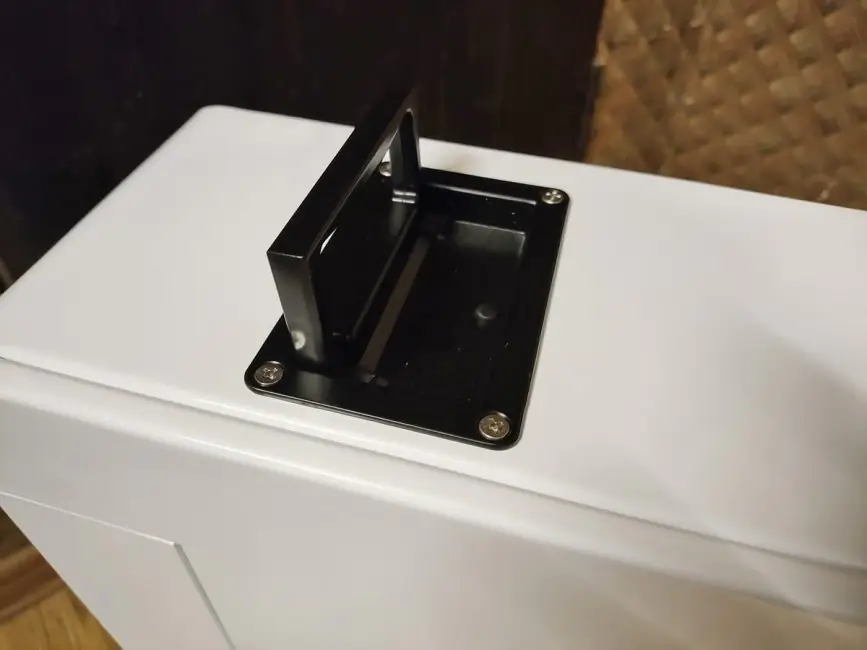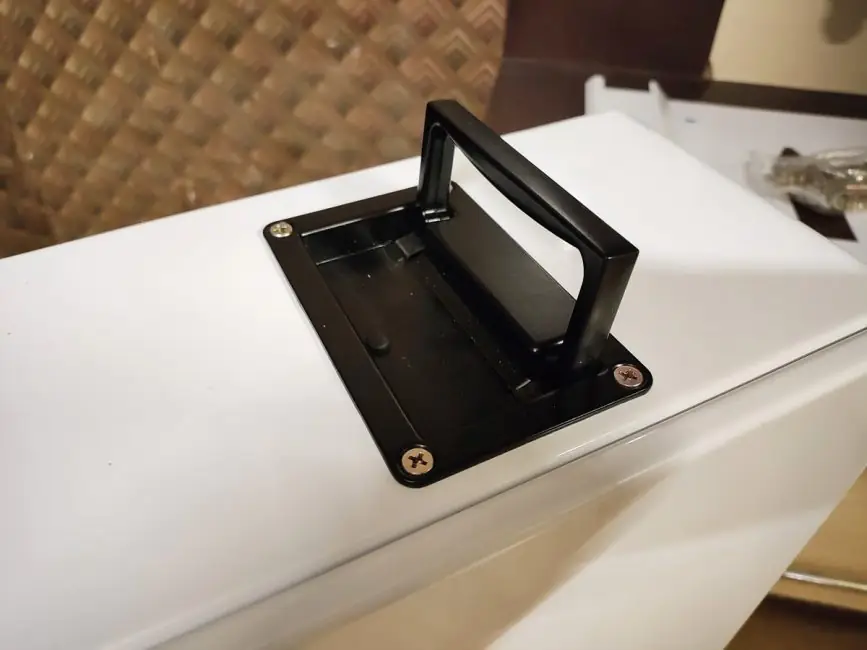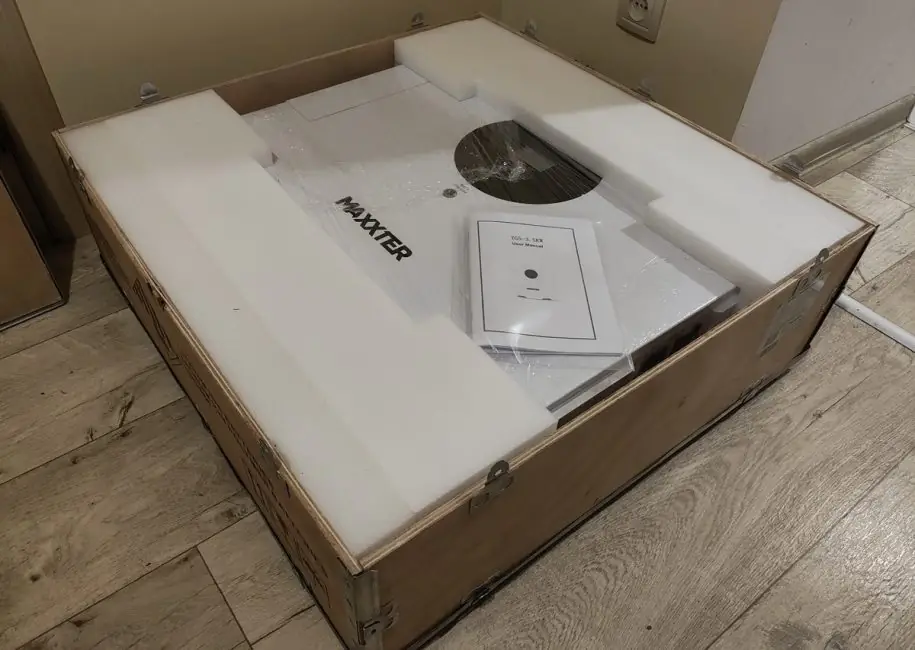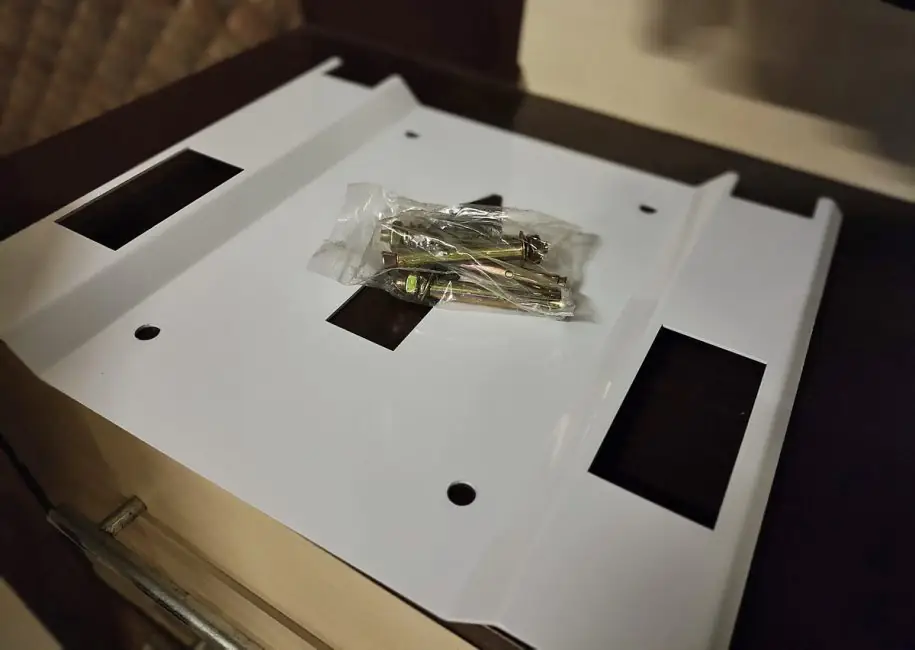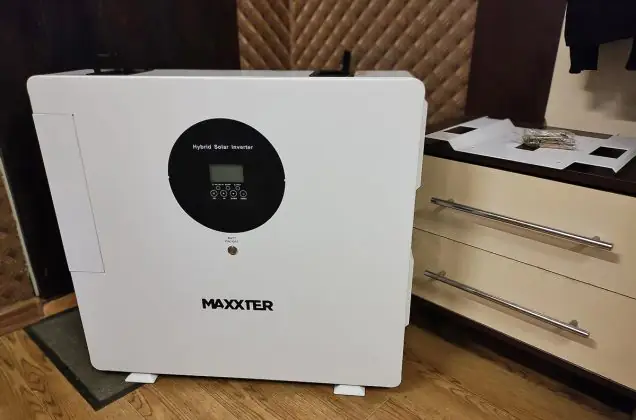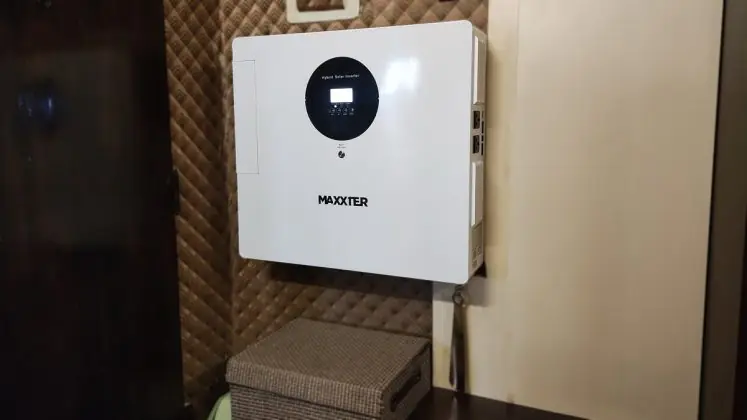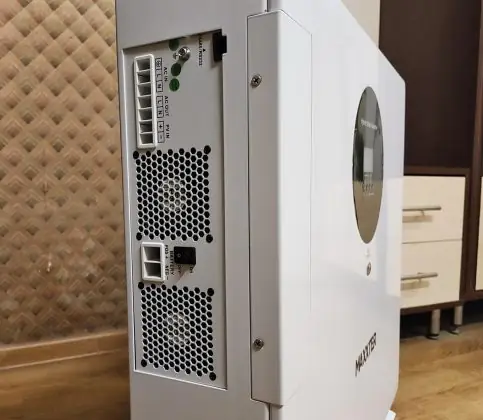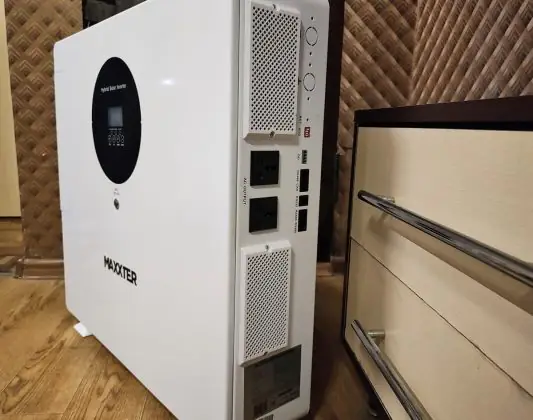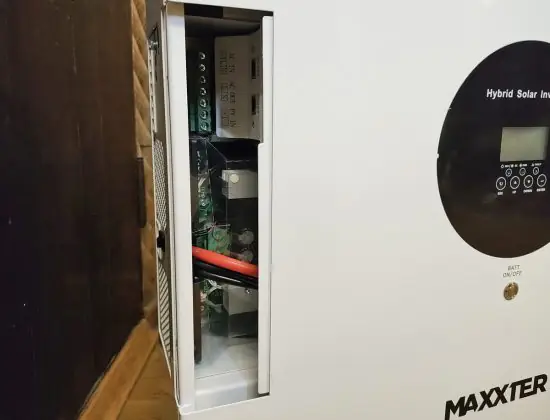© ROOT-NATION.com - Use of content is permitted with a backlink.
Today, I’ll provide a concise overview of the Maxxter YG5-3.5KW all-in-one backup power system—an ideal solution for those seeking a “plug-and-forget” setup. We’ll explore what this device offers, how and where it can be connected, its capabilities, and estimate the autonomy it can provide for your home if you decide to install one.
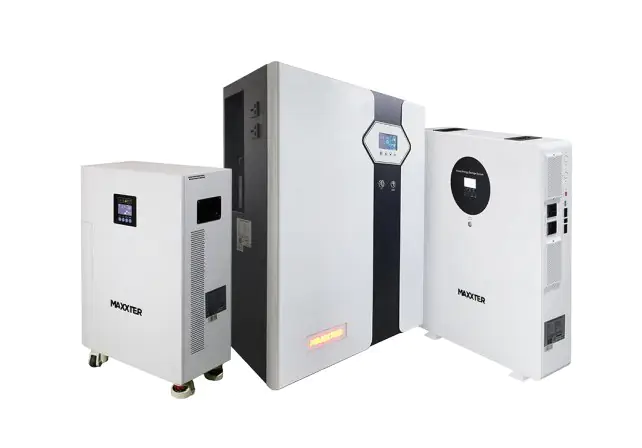
Read also:
- Review of the Sumry HGS 5500W Off Grid Solar Inverter and Sunjetpower 100AH 51V Battery
- How the Prologix 1200 Inverter and Prologix 12V 100AH GEL Battery Are Truly Useful

Introduction
About a year and a half ago, I discovered energy storage systems consisting of a standalone inverter, a high-capacity battery, and a charging unit. This wasn’t out of curiosity but necessity, prompted by a neighbor from the northeast of our continent causing disruptions. My discovery didn’t happen immediately. During winter blackouts, when I needed to power the heating boiler in my house, I purchased a small-capacity power station. It provided enough power for about four hours. At the time, power outages lasted roughly that long, making it the minimum capacity I could afford to keep the kids warm.
However, after a five-day blackout left my wife, children, and our cat staying at my parents’ house, while the temperature in our home dropped to 4°C, I resolved to provide my family with a reliable backup power solution—no matter the cost. Not long after, I was approached by a company to review a system comprising a “standalone inverter + battery.” I completed the review and ultimately decided to purchase the system for myself. I realized it was worth the investment, even if it meant significantly increasing my credit card debt. And I’ve never regretted that decision.
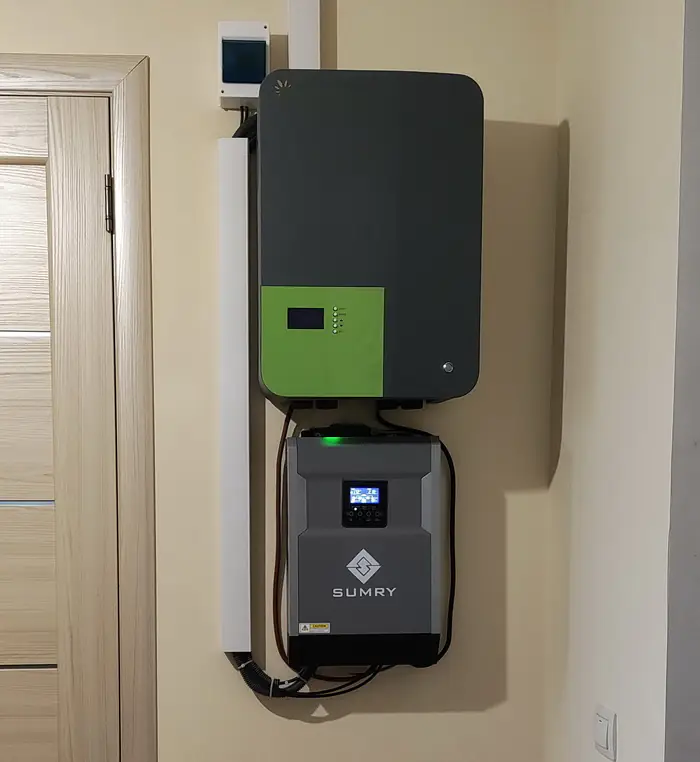
Time passed, and while the troublesome northeastern neighbor has yet to turn into an ocean, another winter of a difficult war is approaching. I decided to pool all my resources to purchase a similar system for my parents’ apartment. They need it badly, but such systems are practically unaffordable for most retirees. After researching what’s currently available on the market—while steering clear of Tesla Powerwall-level price tags—I came across an interesting brand: Maxxter. As stated on their website, Maxxter is “a Ukrainian brand developing in the domestic market since 2002.” I hadn’t heard of them before, but now both you and I know. Their product lineup is quite extensive, though I was specifically interested in energy storage systems. What stood out to me was that Maxxter offered “all-in-one” systems—not separate equipment sets like the one I own, but a single integrated device. Yes, I’ve since learned about similar solutions from other brands, but honestly, where were these “other brands” when so many people needed them? Why are they known only to enthusiasts? Anyway, I thought, “This is it,” and placed an order for the Maxxter YG5-3.5KW. This model features a 3.5 kW standalone inverter and a built-in LiFePO4 battery with specifications of 25.6 V | 196 Ah, equating to a capacity of 5 kWh.
Read also:
- BLUETTI AC70 Portable Power Station Review: Compact Yet Powerful
- BLUETTI AC200L vs OUKITEL P2001 Plus: comparison of portable power stations
Specifications of Maxxter YG5-3.5KW
- Rated output power: 3.5 kW
- Rated output voltage: 230 В
- Output frequency: 50/60 Hz
- Power factor: 1
- Battery: Rated battery voltage: 25.6 V, rated capacity: 5000 Wh, type: LiFePo4
- PV input: Max. power consumption: 1.5 kW, Max. PV input voltage: 145 V, MPPT voltage range: 30~115 V
- Protection against short circuit, overvoltage, overcharge, overload, etc.
- Working temperature range: -10~50℃
- Relative humidity: no more than 90%
- Weight: 52.5 kg
- Dimensions: 635x585x150 mm
Positioning, features and price
The Maxxter YG5-3.5KW backup power system is an all-in-one device that integrates the functions of an inverter, a solar charger, and a battery charger. It comes equipped with a built-in LiFePO4 battery, capable of providing uninterrupted power to household appliances with a load capacity of up to 3.5 kW.
This system is versatile enough to supply energy to individual devices or to power an entire apartment, cottage, or country house. Here are the key features of the YG5-3.5KW:
- Pure sine wave when operating from the inverter
- Customizable input voltage range
- Customizable battery charging current
- Customizable AC / solar charger priority
- Automatic restart
- Overload / overheating / short circuit protection
- Intelligent charger
- Cold start function
Maxxter YG5-3.5KW costs $1900 on the company’s website. Yes, at first glance, it’s expensive, and my retired parents would never have afforded it. But if you looked at chargers of similar capacity and power, then, for example, the Bluetti AC500 + B300S battery module with 5 kW and 3072 Wh (i.e., lower capacity and higher power) costs around $2800, and the Oukitel P5000E PRO (4 kW, 5120 Wh) costs about $2400. That is, all of them:
- more expensive than Maxxter YG5-3.5KW
- weigh the same (+/- a couple of kg difference)
- are not very suitable for full integration into the network of a house/apartment out of the box (yes, there are options, but this is definitely not the “set and forget” solution I wanted for my old ones).
Read also:
- OUKITEL P2001 Plus Portable Power Station Review
- BLUETTI AC200L Portable Power Station Review: Reliable Backup Power for the Entire Home
The only advantage of charging stations could be better mobility. And often it is, if not for… chic handles for easy carrying and sturdy metal legs (which unscrew if the device is hung on the wall) of the Maxxter system.

In other words, if the owner ever needs to relocate quickly, transporting a large charging station or the YG5-3.5KW would be equally challenging, yet equally feasible.
The following illustration demonstrates the basic use case for this system:
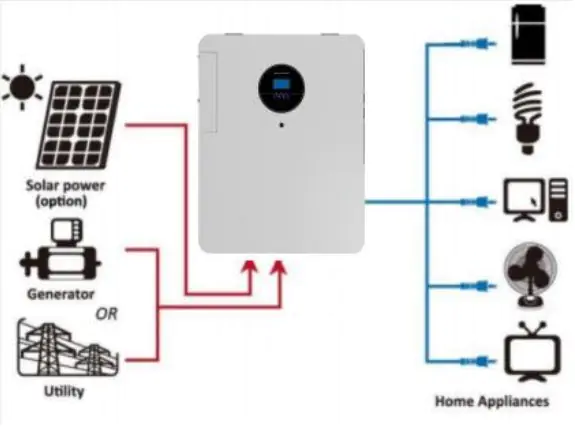
Package contents
The system arrives in a large wooden crate reinforced with metal corners. The gross weight of the product in its packaging is 63 kg, so plan the delivery accordingly to ensure there is assistance available to carry it into the house.

Inside, in a bed of damping material, there are:
- the Maxxter YG5-3.5KW itself
- durable metal wall plate
- fasteners
- instruction manual
The YG5-3.5KW is a large white device with a sleek design that can fit seamlessly into any interior—whether it’s the entryway in need of renovation or a modern, stylish open-plan space.
Cables are not included in the kit because they are not necessary. Essentially, you (or an electrician, if you’re not qualified to work with wiring) will “integrate” the system into the electrical network. I’ll explain how it works in more detail shortly.
Read also:
- ALLPOWERS S1500 Portable Power Station (AP-SS-008): Review and user experience
- How to Stay Warm in Winter Using a Power Bank or Charging Station
Installation and connection of Maxxter YG5-3.5KW
The key difference between a backup power system and a charging station is that the former integrates directly into the electrical network of your apartment, office, store, or home. In the event of a power outage, it switches all the connected devices to power from the built-in battery. And 5 kWh is quite a substantial capacity.
Before choosing an installation location, consider the following points:
- Do not install the system on flammable building materials.
- Install at eye level for easy reading of the LCD display.
- For optimal performance, the ambient temperature should be between 0 and 55°C.
- The recommended installation position is vertical wall mounting or floor mounting. I think it goes without saying that due to the weight of the device, the wall should not be a lightweight partition.
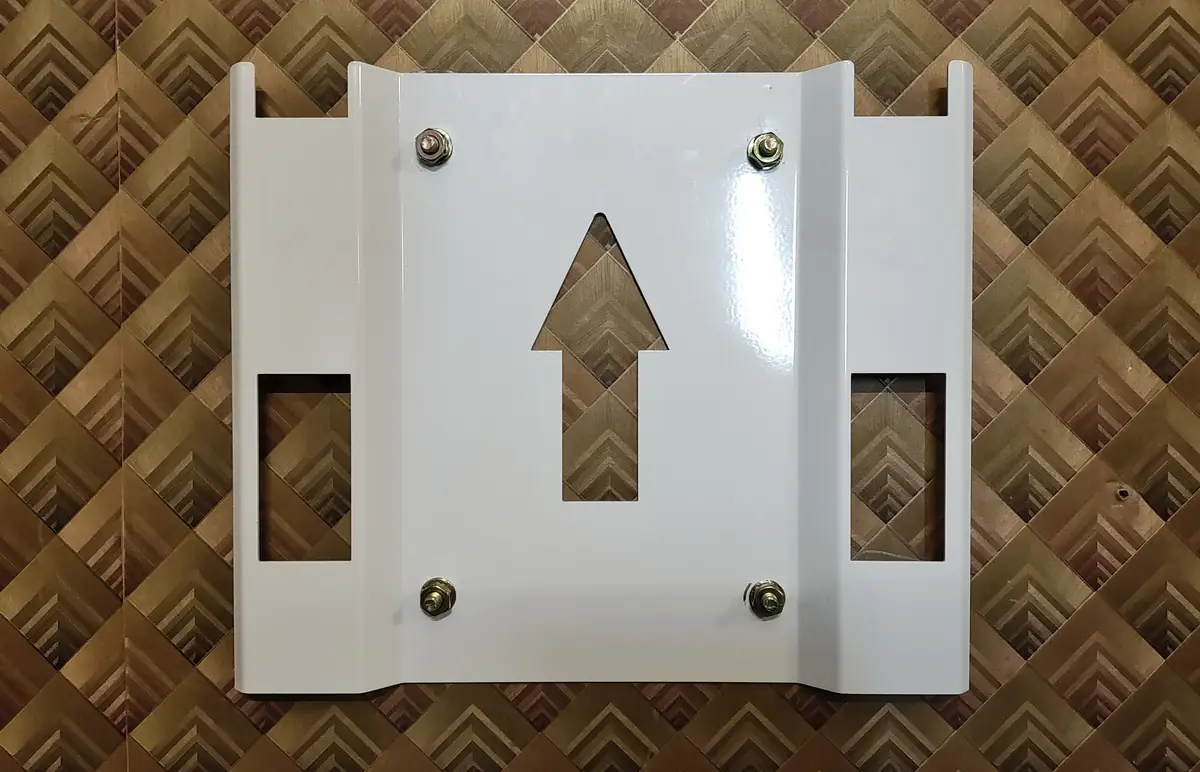
- Allow enough space, as shown below, for cooling and access to the wires.
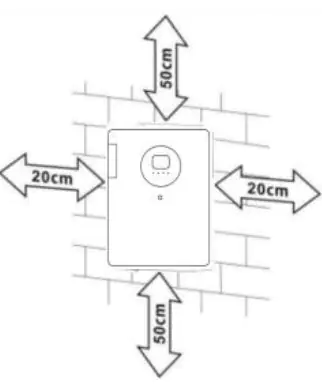
An important note: all electrical installation work must be carried out by qualified professionals.
The installation process involves integrating the system into the gap between the meter and the circuit breakers for internal consumers. In a private house, the installation is somewhat easier because there are more options for placement. For example, in my case, the distance between the meter on the outside wall and the consumer circuit breaker panel inside is about 5-7 meters. However, in my parents’ apartment, both the meter and the circuit breakers are in the same location—in a wall niche behind small doors—so there’s much less space to work with.
Additionally, it’s important to remember that between the system and the AC power source, a separate AC switch needs to be installed. This will ensure a reliable disconnection of the inverter during maintenance and provide complete protection against excessive incoming AC current.
Any electrician will tell you that it is essential to install what’s called a “bypass” — a line with an AC switch that, in case of need, will “bypass” your Maxxter YG5-3.5KW. Why is this necessary? It’s in case you need to temporarily disconnect the backup power system from the network (for example, to send it for maintenance or for another reason). In this case, you simply activate the bypass line, and you’ll receive power from the external grid only. Without this, you would have a break in the network, and you’d be without electricity until you reconnect the system.
And once again, let me remind you — if you’re not a qualified electrician, don’t attempt to install the system yourself. Trust me, charred fingers (at the very least) are definitely something you want to avoid. It’s better to pay a trained professional — considering the cost of the system, the installation and connection by experts are really just a small fraction.
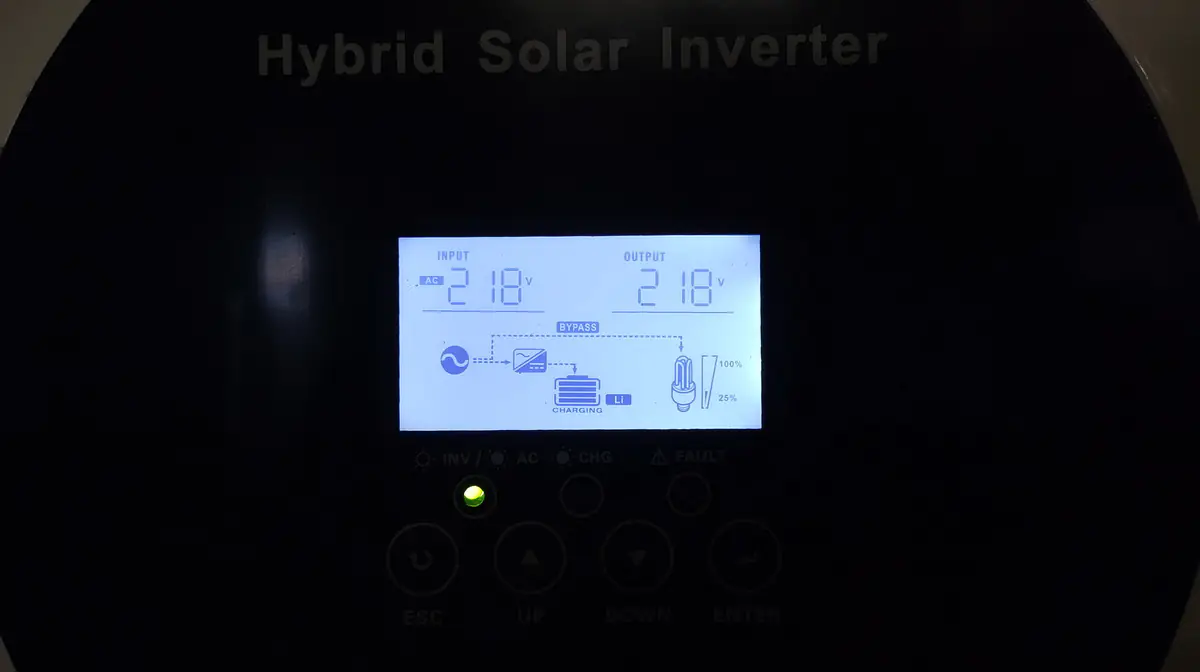
Read also:
- Nuclear Waste: What It Is and How It Is Disposed Of
- Weapons of Ukrainian Victory: MAGURA V5 Maritime Drones
Calculating the autonomy of housing
A system like the Maxxter YG5-3.5KW emergency power supply (energy storage) can address a variety of needs. When you consider the benefits of such a device, the price becomes more understandable, and it’s clear that the peace of mind and convenience it offers are worth it.
For instance, if the average energy consumption of your household is around 200 Wh, this would cover the use of energy-efficient lighting, a router, a refrigerator, and a few other small appliances (excluding brief power spikes when the refrigerator motor kicks in, as these have little impact on the average consumption over an hour). In this case, the built-in 5000 Wh battery would provide approximately one full day of autonomous operation.
At my place, as mentioned in the introduction, I have a similar system with a 5.12 kWh battery. With an average consumption of 300-350 Wh, the battery lasts around 14-15 hours, as I’ve already tested. This includes lighting, the refrigerator, the router, an electric kettle, an induction stove (brief consumption spikes up to 2 kW can be seen in the graph below), a powerful computer, a large monitor, and a Bosch two-circuit gas boiler. I don’t see the point in running the washing machine on battery power—it’s better to wait for external power to be restored. However, it’s possible, but the battery will deplete a bit faster.
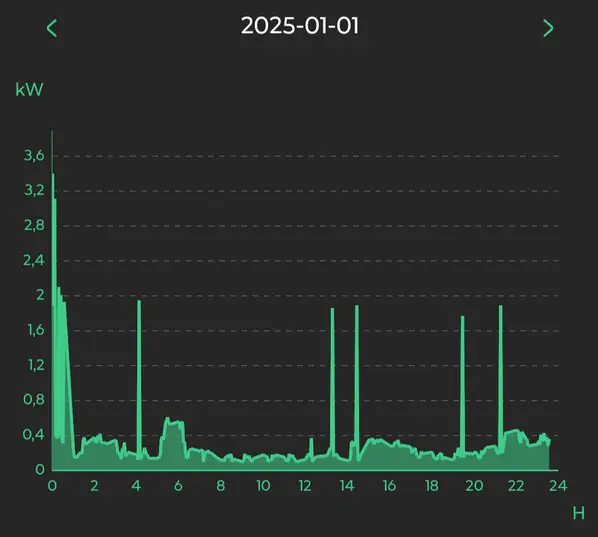
What’s really nice is that the switch to battery power happens seamlessly and automatically. The Maxxter YG5-3.5KW notifies you with a simple “click” sound. It could be a bit louder, though, as my parents have missed the notification a few times and continued with their usual activities as if nothing had changed, until external power was restored and the system clicked again. This is what I truly call “set it and forget it.”
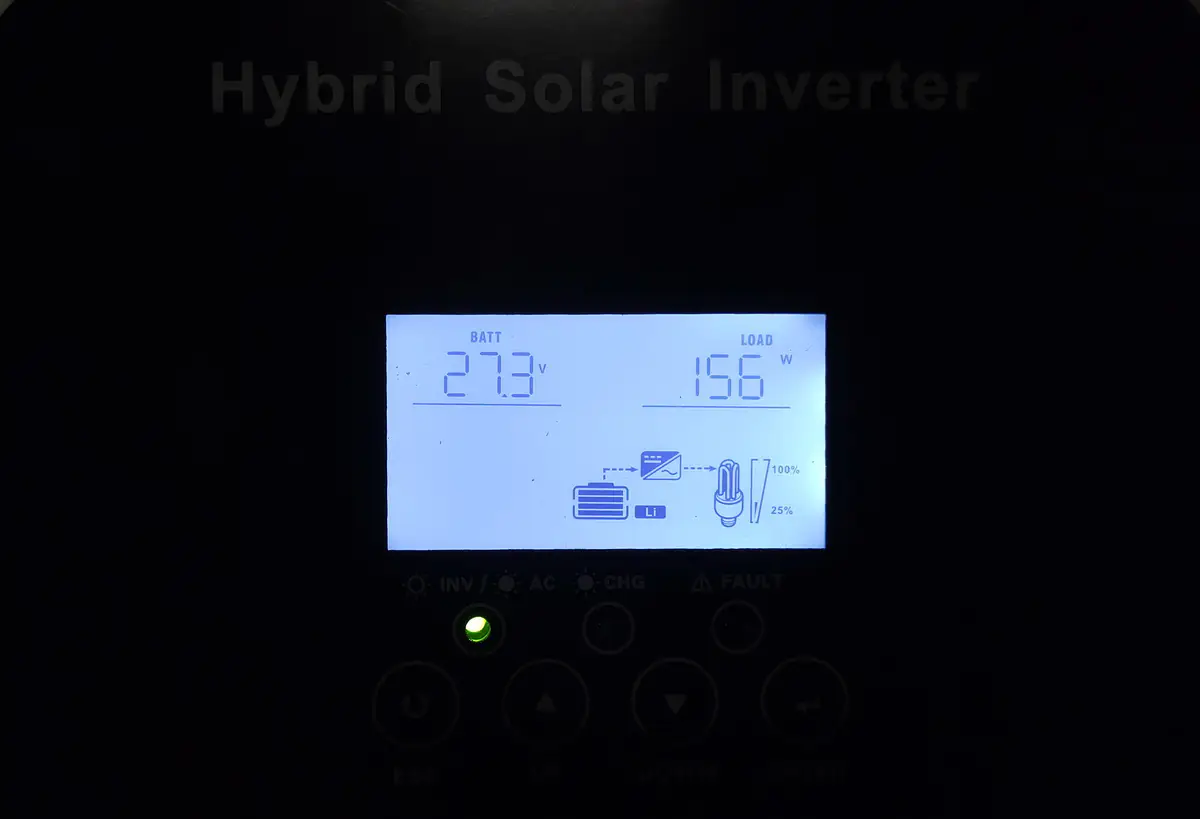
Conclusions
You know, a review is easy to write when it comes from the heart. I decided to write the review for the Maxxter YG5-3.5KW even before installing the system in my parents’ apartment. Why? Because I’ve had a similar energy storage system for about a year and a half, though with a slightly different setup—separate inverter and battery. It has come through for me so many times that I can’t even count them all.
What can I say about the YG5-3.5KW? The system has been installed and running for three weeks now. During this time, the power has gone out at least once a day, and everything works like clockwork—switching automatically, with the battery charging once external power is restored, providing plenty of autonomy. My parents have no complaints about the device; only positive feedback.
Yes, for someone with a limited income, it’s expensive and definitely out of reach for pensioners. Yes, I, too, had to put quite a bit on my credit card, just like I did with my own system. But if you have the opportunity to install such a system—even through installment payments or another option—it’s definitely worth it. For me, the best reward was my mom’s comment: “Life is so much easier now.”
Read also:
- Review of Budget-Friendly EnerGenie Desktop 1000VA UPS Stabilizer
- Review of the ASUS ROG Zephyrus G16 2024 Gaming Laptop with AMD Ryzen AI 9 HX 370
- HyperX Alloy Rise 75 Wireless Keyboard Review
- Top 5 Graphics Cards for S.T.A.L.K.E.R. 2: Heart of Chornobyl



